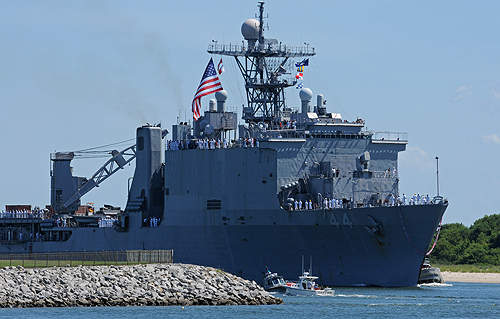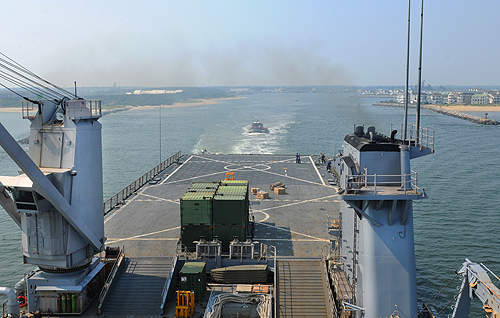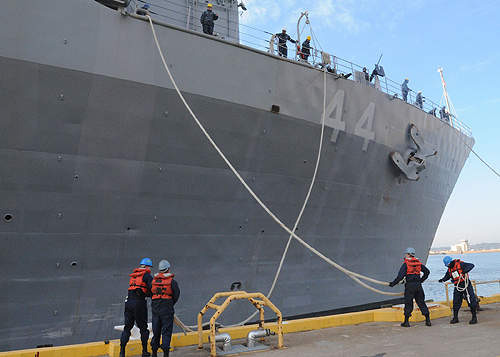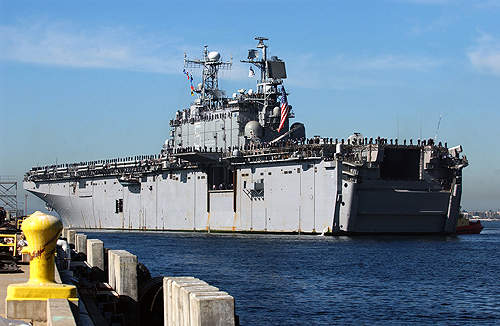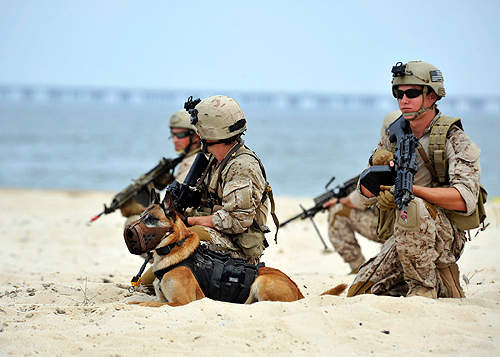Joint Expeditionary Base Little Creek-Fort Story is a principle base of the operating forces and shore commands of the US Navy Atlantic Fleet. It consists of two sites – Joint Expeditionary Base East (Fort Story) and West (Little Creek).
More than 14,400 military and civilian personnel are employed on the base. The base population also includes contractors and non-appropriated fund employees.
Location and layout
The base is located in the tidewater region of Virginia, near the entrance of the Chesapeake Bay, the largest estuary in the US. The base lies in the extreme north-west corner of Virginia Beach and occupies a total area of 2,215 acres. The base’s entrance channel has a project depth of 22ft, and is surrounded by the piers. Little Creek Cove and Desert Cove are located on the western side of the base.
Joint Expeditionary Base history
Joint Expeditionary Base Little Creek-Fort Story was formed in October 2009 by the merger of Naval Amphibious Base Little Creek and the Fort Story army base. The merger was recommended by the US Department of Defense in its BRAC (Base Realignment and Closure) commission 2005 recommendations.
Naval Amphibious Base Little Creek was commissioned in 1945 and served as a training location for amphibious forces during World War II. Fort Story was established in 1607.
Joint Expeditionary Base operations
Joint Expeditionary Base Little Creek-Fort Story provides support for 18 homeported ships, 35 Landing Crafts Air Cushions (LCACs) and 34 conventional waterborne landing craft units (LCUs), among others.
Some of the ships homeported at the base include:
- USS Whidbey Island (LSD-41)
- USS Fort McHenry (LSD-43)
- USS Gunston Hall (LSD-44)
- USS Ashland (LSD-48)
- USS Carter Hall (LSD-50)
- USS Oak Hill (LSD-51)
- USS Tempest (PC-2)
- USS Hurricane (PC-3)
- USS Monsoon (PC-4)
- USS Squall (PC-7)
- USS Thunderbolt (PC-12).
More than 75 tenant and support commands operate from the base. Major shore commands include Underwater Construction Team One, Explosive Ordnance Diposal Mobile Unit Two, Seal Delivery Vehicle Team Two, Naval Beach Group Two, Naval Special Warfare Group Two, Tactical Air Control Group Two and Mobile Diving and Salvage Unit Two.
The base is equipped with operational, support and training installations to facilitate amphibious operations. It also assures a good quality of life for sailors and their families.
Garrison facilities
The base has 61 piers around the Little Creek channel, which provide docking facilities for homeported warships. Piers 11 to 19 are used by the large naval ships.
The garrison facilities at Fort Story include army transportation. Navy units and explosives ordnance disposal teams also use the training and support facilities available at Fort Story.
Outlying facilities include a 6,013-acre naval gunfire support range at Bloodsworth Island, Maryland, and the Camp Pendleton Marine Corps base.
Other facilities and services
The base has training facilities for navy, army and Marine Corps personnel. The Naval and Marine Corps Reserve Readiness Centre coordinates the training activities. Around 4,500 personnel are given training a year.
The refresher and underway training for navy and coast guard ships is provided by the Fleet Training Unit. The Expeditionary Warfare Training Group Atlantic (EWTGL) offers training in onboard maintenance, naval gunfire support and seamanship for the marines and crews of the Atlantic Fleet.
In January 2010, The US Navy has established cyber forces (CYBERFOR) at the base. It is the type command for cryptography or signals intelligence, electronic warfare, information operations, intelligence, networks and space.
The Fleet and Family Support Centres conduct education and training courses, counselling and advocacy to help the commands maintain operational readiness. Military housing, childcare centres, a commissary, a galley, bargain shops, navy lodges, mini marts and home stores are also available.

